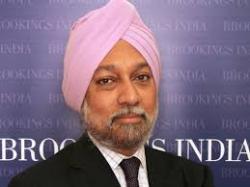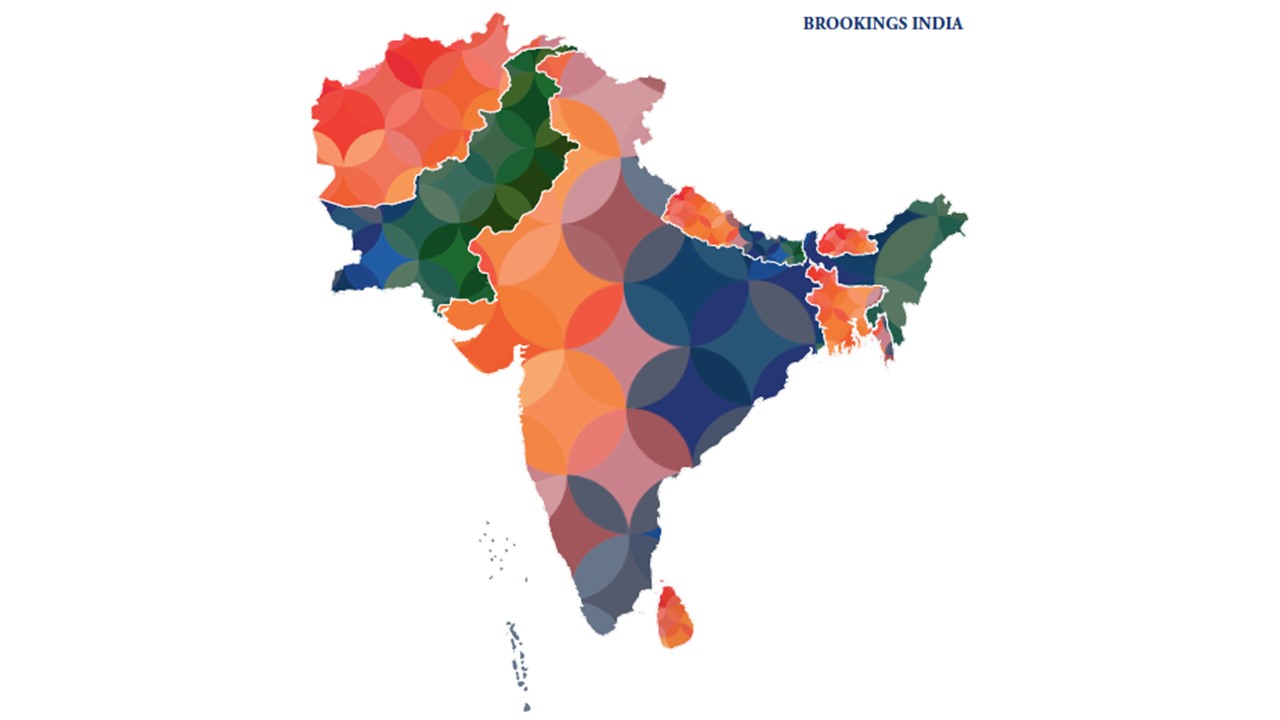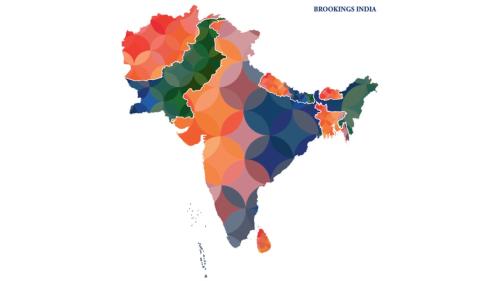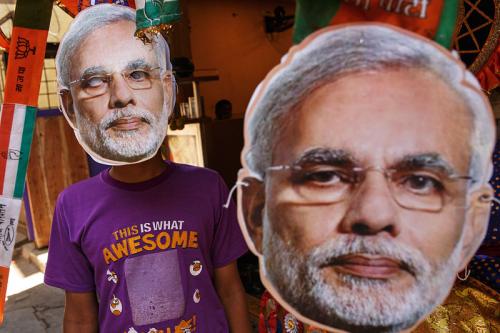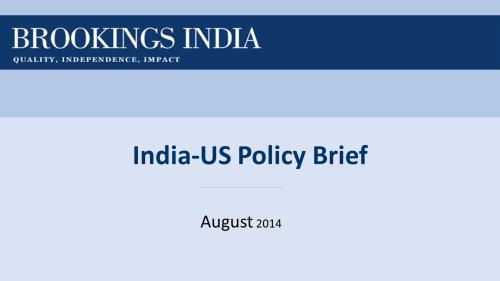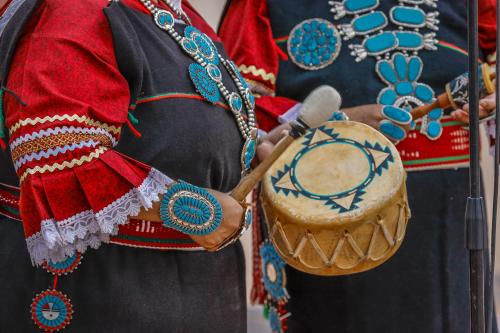Content from the Brookings Institution India Center is now archived. After seven years of an impactful partnership, as of September 11, 2020, Brookings India is now the Centre for Social and Economic Progress, an independent public policy institution based in India.
This chapter is a part of Brookings India’s briefing book, “Reinvigorating SAARC: India’s Opportunities and Challenges.” To view the preface and table of contents, click here.
Since his election in May 2014, Prime Minister Narendra Modi has ascribed high priority to establishing stronger relations with India’s neighbors. While the gesture of inviting South Asian Association for Regional Cooperation (SAARC) leaders to his swearing-in ceremony might be considered symbolic, it provided the necessary impetus in bringing SAARC to the forefront of India’s foreign policy lexicon. Several measures since then have reinforced the government’s resolve to forge closer strategic ties with countries in the region. High-level visits to Nepal, Bangladesh, and Bhutan – alongside summits with larger economic and geopolitical powers such as Japan, China, and the United States – not only signal their importance in India’s foreign policy priorities, but have also laid the groundwork for stronger and more substantive cooperation. Similarly, out-of-the-box thinking on avenues for cooperation – including the proposal for a SAARC satellite and a Centre for Good Governance – signal the government’s intention to play a proactive role in providing a leadership and governance structure to a region characterized by fragmentation and tension. During the visit of the Prime Minister of Nepal to India, Modi described SAARC as a “vital instrument to add to the strength of each member nation and advance collective action for shared prosperity in the region.”
The steps taken over the past few months have infused a new life and hope for greater integration and cooperation in the region and, in light of this, the 2014 SAARC Summit – to be held in November, in Kathmandu – provides an opportunity (despite several challenges) to reinvigorate the goals, objectives and future direction of the grouping. Indeed, there is great expectation that this year’s SAARC Summit could be a turning point for the organization.
Looking back
SAARC’s roots lay in the Declaration on South Asian Regional Cooperation and the Integrated Programme of Action (IPA), adopted by the foreign ministers of South Asia in 1983, calling for regional cooperation in the areas of agriculture, rural development, telecommunications, meteorology, and health and population activities. Subsequently, SAARC was formally established in 1985, during its first Summit in Dhaka, Bangladesh. The overarching objective of the alliance was to consolidate South Asia’s economic and geopolitical potential, and promote the welfare of the population of the region and improve their quality of life.
But more than three decades since it was formed, SAARC stands on shaky ground, and according to some experts has largely been a “somnolent and disappointing body,” its achievements meager and unconvincing.
Economically, the region is one of the least integrated in the world, with very low levels of intra-regional trade and investment. Intra-regional trade is under 5 percent of total official trade – less than it was fifty years ago – while intra-regional foreign investments as a proportion of total investment figures are just as paltry. Juxtaposed to this, intra-regional trade accounts for nearly 35 percent of the total trade in East Asia, 25 percent in Southeast Asia, and almost 12 percent in Middle East and Africa. The SAFTA (South Asian Free Trade Agreement) group comprises a region that has tremendous economic potential, but despite having 23 percent of the world’s population, the region accounts for only 6 percent of Purchasing Power Parity based global GDP, 2 percent of world goods trade, 3 percent of global foreign direct investment, but more than 40 percent of the world’s poor.
SAARC has also done little to improve bilateral disagreements and skirmishes, and the Regional Convention on Suppression of Terrorism has failed to combat terrorist activity. Inter-state conflict is also one of the most significant reasons for the stalling of the SAFTA. The group’s commitment to the goals of the SAARC Charter for Democracy, have been disappointing with several member-nations struggling with military coups, unstable governments, rampant corruption and abuse of power.
While SAARC’s failure to realize its goals may be attributed to several factors – ranging from terrorism, strained bilateral relations, and the absence of military and strategic cooperation – India’s own engagement with SAARC has been found wanting, even though it has evolved over the years.
India’s initial attitude towards SAARC was, according to one observer, “akin to the attempt by the Lilliputs to tie down Gulliver.” It, consequently, played a limited role in the alliance, choosing instead to engage with its neighbors bilaterally based on reciprocity. However, as its economic clout grew in the mid-1990s, India began to assume a greater role as a regional leader. The so-called Gujral Doctrine, wherein Prime Minister I.K. Gujral outlined five principles to govern India’s relations with its immediate neighbors, precipitated this change in large part. The Doctrine stemmed from the belief that India’s stature on the world stage was closely tied to its relations with its neighbors.
Subsequent governments – notably those led by Prime Ministers Atal Bihari Vajpayee and Manmohan Singh – continued to engage with India’s neighbors in this spirit. During India’s leadership of the 2007 SAARC Summit, External Affairs Minister Pranab Mukherjee, in an address to a Conference of Parliamentarians from the SAARC Region, declared India’s readiness – as the largest nation in the region – “to accept asymmetrical responsibilities, including opening up her markets to her South Asian neighbors without insisting on reciprocity.”
The change in posturing notwithstanding, India hasn’t been able to translate all of its promises into action. Studies find that the presence of a large economy often has positive externalities for smaller economies in the region. The International Monetary Fund finds, however, that India’s growth has had only a minuscule impact on the growth of its neighbors. The paltry level of intra-regional trade stems from the region being the least open in the world, but within the region, India remains the least open country, with the lowest trade-to-GDP ratio. Besides, SAARC is still a long way from achieving even the most basic objective of a regional organization – a no-war scenario among its members.
Looking ahead
Despite SAARC’s dismal past Modi has boldly stroked new hope for the future of SAARC. Modi is widely seen as a reformist prime minister, who is expected to open up the economy and liberalize trade. In addition, agreements stemming from visits to neighboring countries reveal a certain line of thinking – cooperation, particularly in infrastructure and energy, targeted at resolving shared problems. It is therefore logical that the government would seek similar opportunities to expand and deepen the engagement with SAARC.
Modi’s ambition for SAARC, however, is confronted by external and internal challenges. Externally, the continuing tensions with Pakistan, the uncertainty over Afghanistan and the role of outside actors, notably China, pose threats to reinvigorating SAARC. Internally, the limited capacity of the Indian state, particularly the miniscule size of the foreign service as well as the ability to engage key state governments as stakeholders in foreign policy are also challenges that need to be addressed.
Despite these challenges or indeed because of them cooperation through SAARC on infrastructure, energy, water, trade, climate change mitigation, higher education, healthcare, terrorism and even military cooperation would contribute to India’s twin goals of development and stability in the neighborhood. Modi has thrown down the gauntlet that “South Asian countries should identify specific areas of common heritage, challenges and opportunities to foster region-wide cooperation.” This briefing book serves as Brookings India’s endeavor in that direction, to hopefully set the tone for New Delhi’s new leadership role in SAARC.
The Brookings Institution is committed to quality, independence, and impact.
We are supported by a diverse array of funders. In line with our values and policies, each Brookings publication represents the sole views of its author(s).

